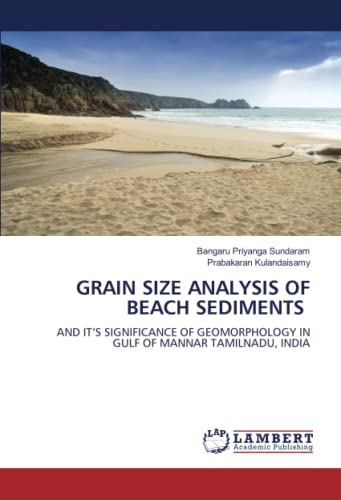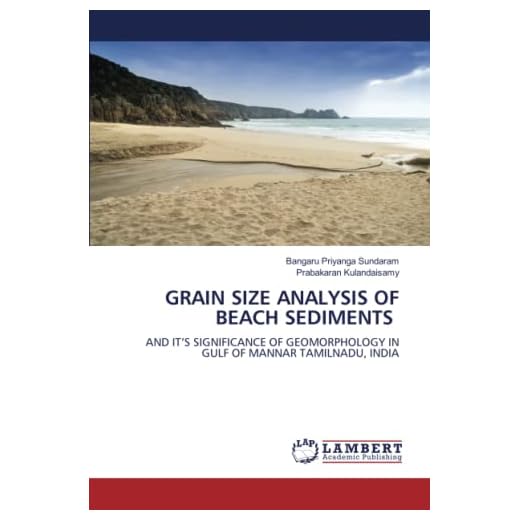


Sieve analysis is a common method used to determine the particle size distribution of various types of sediments. It involves passing a sample of sediment through a series of sieves with different mesh sizes, and then measuring the amount of material retained on each sieve. This information can provide valuable insights into the characteristics of sediments, including the presence of different grain sizes and the potential for sorting.
Fluvial deposits, which are formed by the action of rivers and streams, can be highly variable in terms of their particle size distribution. They typically contain a mixture of coarse and fine grains, ranging from pebbles and gravel to sand and silt. The composition and texture of fluvial deposits can vary depending on factors such as the type of rock being eroded, the velocity of the water, and the distance from the source.
While sieve analysis is a widely used technique for sediment characterization, its application to fluvial deposits can be challenging. Fluvial sediments are often poorly sorted, meaning that there is a wide range of grain sizes present. This makes it difficult to accurately measure the particle size distribution using sieves alone.
However, sieve analysis can still provide useful information about the dominant grain sizes in fluvial deposits, especially if it is combined with other analytical techniques. For example, laser diffraction can be used to measure the particle size distribution of fine-grained sediments, while sieves can be used to analyze the coarser fractions. This combination of methods allows for a more comprehensive characterization of fluvial deposits.
In conclusion, while sieve analysis alone may not be sufficient for accurately determining the particle size distribution of fluvial deposits, it can still be a valuable tool when used in conjunction with other techniques. By providing insights into the dominant grain sizes present, sieve analysis can help researchers better understand the characteristics and formation processes of fluvial sediments.
Understanding Sieve Analysis for Fluvial Deposits
In the field of sedimentology, sieve analysis is a widely used method to study the grain size distribution of sediment samples. Although commonly employed for soil and other types of deposits, it can also be applied to fluvial deposits. This article aims to provide a comprehensive understanding of how sieve analysis can be used to analyze fluvial deposits.
What are Fluvial Deposits?
Fluvial deposits, also known as river deposits, are sediments that are transported and deposited by rivers or streams. These deposits are characterized by their unique grain size distributions, which are influenced by various factors like the velocity of the water, the type of sediment being transported, and the energy of the river system.
How Does Sieve Analysis Work?
Sieve analysis involves the separation and measurement of different grain sizes within a sediment sample. The process starts by drying the sample and then passing it through a series of sieves with different mesh sizes. The sieves are stacked in order from largest to smallest, and the sample is shaken or vibrated to facilitate the separation of particles. The amount of material retained in each sieve is then measured and recorded.
Based on the percentage of material retained in each sieve, a grain size distribution curve can be constructed. This curve provides valuable information about the sediment sample, including the dominant grain sizes, the distribution of different grain sizes, and the presence of any outlier particles.
Applying Sieve Analysis to Fluvial Deposits
When studying fluvial deposits, sieve analysis can yield important insights into the sediment dynamics of a river system. It can help determine the average grain size of the deposit and identify any trends in grain size distribution. By comparing the grain size distribution curves of different samples, researchers can also infer the transport and depositional processes that shaped the fluvial deposits.
Sieve analysis can be complemented with other analytical techniques, such as laser diffraction or settling velocity measurements, to obtain a more comprehensive understanding of the sediment characteristics. Additionally, the results of sieve analysis can be used to classify the fluvial deposits according to various sediment classification schemes.
Conclusion
While sieve analysis is commonly used for soil and other types of deposits, it can also be an effective tool for studying fluvial deposits. By providing insights into the grain size distribution of sediment samples, sieve analysis contributes to our understanding of fluvial processes and the formation of river deposits. Its application, in combination with other analytical techniques, allows researchers to gain a comprehensive understanding of the sediment dynamics in fluvial environments.
What is Sieve Analysis?
Sieve analysis is a method used to determine the particle size distribution of a granular material. It is commonly used in industries such as construction, mining, and agriculture to assess the quality and suitability of materials for various purposes.
The process involves passing a sample of the material through a series of sieves with different mesh sizes. The sieves are stacked in descending order of mesh size, from the coarsest at the top to the finest at the bottom. The material is shaken or agitated to facilitate the passage of particles through the openings in the sieves.
As the material is sieved, it is collected in the corresponding sieves, and the amount retained on each sieve is measured. This data is then used to create a particle size distribution curve, which shows the percentage of material retained on each sieve.
Sieve analysis provides valuable information about the gradation and uniformity of the material being tested. It can help determine the suitability of a material for specific applications, such as determining whether a sand sample is suitable for use in concrete production or whether a soil sample is suitable for agricultural purposes.
While sieve analysis is commonly used for various types of materials, it may have limitations when applied to fluvial deposits. Fluvial deposits are sedimentary materials that are transported by rivers and streams, which can result in a wide range of particle sizes and a non-uniform distribution. In such cases, additional testing methods may be required to accurately assess the characteristics of fluvial deposits.
Applying Sieve Analysis to Fluvial Deposits
Fluvial deposits, which are sedimentary materials deposited by rivers and streams, can vary greatly in their composition and size distribution. To understand the characteristics of these deposits and their potential uses, researchers often use the technique of sieve analysis.
What is Sieve Analysis?
Sieve analysis is a commonly used method for determining the particle size distribution of a granular material. It involves passing a sample of the material through a series of sieves with progressively smaller openings, and then measuring the mass of particles retained on each sieve. The results are typically presented as a histogram or a cumulative distribution curve, showing the percentage of material retained on each sieve size.
Advantages of Sieve Analysis for Fluvial Deposits
Sieve analysis offers several advantages when applied to fluvial deposits:
- Quantitative assessment: By determining the particle size distribution, sieve analysis allows for a quantitative assessment of the sediment composition. This information can be crucial for understanding the origin, transport, and deposition processes of the fluvial deposits.
- Standardized method: Sieve analysis is a widely accepted and standardized method in geotechnical and sedimentology research. This allows for comparability between different studies and facilitates the pooling and analysis of data from multiple sources.
- Physical characterization: The particle size distribution obtained from sieve analysis provides valuable information about the physical properties of the fluvial deposits. This includes parameters such as permeability, porosity, settling behavior, and potential for erosion or compaction.
- Engineering applications: The knowledge of particle size distribution obtained from sieve analysis can be directly applied to engineering practices involving fluvial deposits, such as designing riverbank protection measures, assessing the stability of riverbeds, or planning dredging operations.
Overall, sieve analysis is a powerful tool for the study and characterization of fluvial deposits. It allows for a quantitative assessment of particle sizes, offers standardized results, provides valuable physical characterization, and enables direct application to engineering practices. Researchers and professionals working with fluvial deposits can benefit greatly from the insights provided by sieve analysis.
| Sieve Size (mm) | Mass Retained (g) | Percentage Retained (%) |
|---|---|---|
| 4.00 | 0.75 | 15.0 |
| 2.00 | 1.30 | 26.0 |
| 1.00 | 0.90 | 18.0 |
| 0.50 | 1.45 | 29.0 |
| 0.25 | 0.60 | 12.0 |
Advantages and Limitations of Sieve Analysis for Fluvial Deposits
Sieve analysis is a commonly used technique for determining the particle size distribution of sediment samples, including those from fluvial deposits. This method involves passing a known quantity of sediment through a series of sieves with different mesh sizes, and measuring the weight of sediment retained on each sieve.
There are several advantages of using sieve analysis for fluvial deposits:
| Advantages |
|
However, there are also limitations to consider when using sieve analysis for fluvial deposits:
| Limitations |
|
In conclusion, sieve analysis is a valuable method for studying fluvial deposits, providing important information on their grain size distribution. However, it is essential to recognize the advantages and limitations of this technique and use it in conjunction with other methods to ensure a comprehensive understanding of the sedimentological characteristics of fluvial systems.






